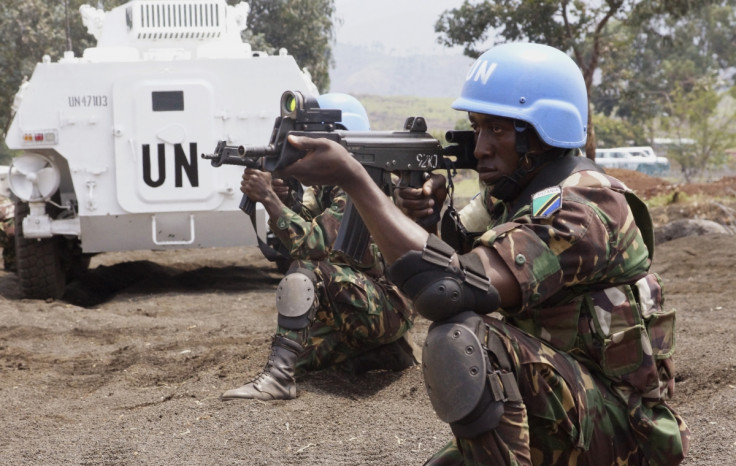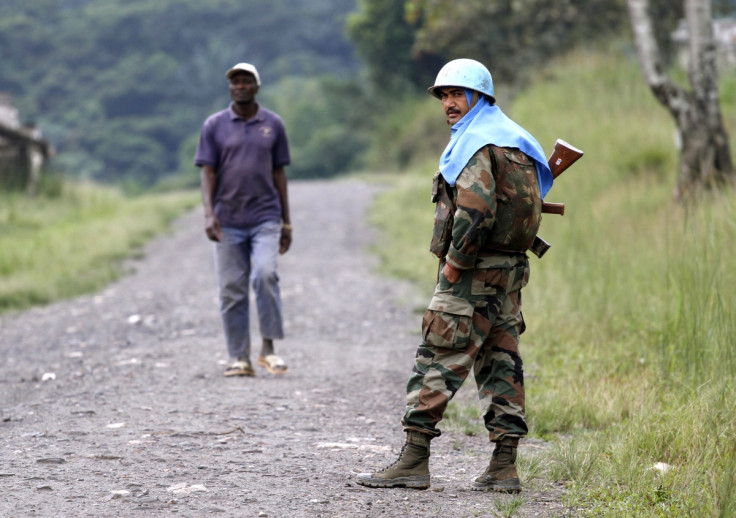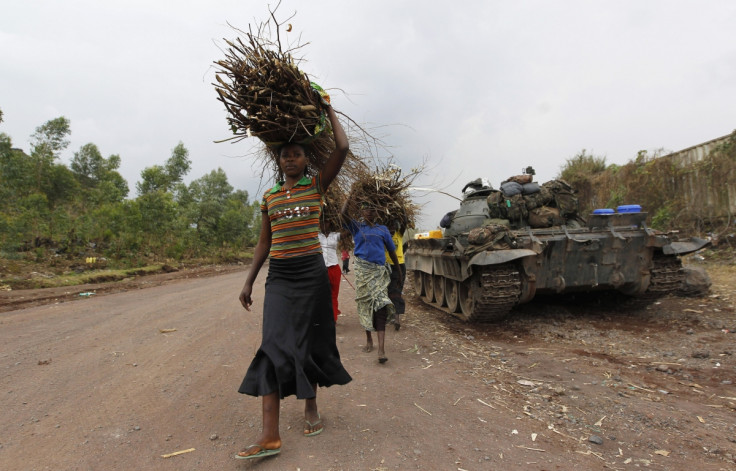DRC: What is the MONUSCO and what role does it have ahead of the elections?

In 2015, the United Nations (UN) Security Council decided to extend until 30 June 2016 the mandate of the largest and most expensive peacekeeping mission in the world, the body's mission in the DRC dubbed MONUSCO.
Often targeted in attacks led by dozens of rebel groups, the ill-fated African mission has come under fire and lost credibility in recent years, but experts agree that without the UN mission insecurity would be worse in DRC. As Congolese voices are pressing the UN to change the mission's mandate ahead of the already-embattled elections IBTimes UK looks at the world's largest peacekeeping contingent.
What is the MONUSCO?
Quite simply, the mission's name is the acronym for the UN Organization Stabilization Mission in the Democratic Republic of the Congo. The $1.3bn (£0.9bn, €1.17bn ) a year mission was created when it took over from an earlier UN peacekeeping operation – the United Nations Organization Mission in Democratic Republic of the Congo dubbed MONUC – on 1 July 2010.
Its predecessor, MONUC, was initially started as an observer mission in 1999. But the UN Security Council was forced to enlarge the small team after it found itself in the middle of Africa's World War – which pitted nine countries and up to 40 rebel groups.
Despite a new capacity, the mission was seen as toothless. It was, for instance, unable to prevent a siege in Bukavu - a city in the Eastern South Kivu province, carried out by rebels in 2004.
Following growing international criticism and threats of expulsion from the president Joseph Kabila and reproval by Etienne Tshisekedi, his main opposition opponent, MONUC transitioned to MONUSCO. Since then, the mission has continued to enjoy mixed fortunes, particularly in the minerals-rich Eastern regions. In a highly-publicised, and controversial case of protection failure, for example, reports emerged of women throwing their children over the fence of a Monusco base before being massacred by approaching militiamen.

How large is the mission?
At the time of writing, the UN said there were 23,438 personnel within the MONUSCO force, that is led by the South African Commander, Derrick Mgwebi.
60 countries currently contribute to the force, with India, Bangladesh, Tanzania, South Africa, Uruguay, Nepal, Egypt, Morocco and Pakistan contributing the most military personnel – over 700 each. In comparison, the United Kingdom and France contribute six and five each, respectively.
What is MONUSCO's current role?
The mission today has three priorities: protecting civilians, stabilising the country, and supporting implementation of the Peace, Security and Cooperation Framework for the DRC and the region.
Breakdown of MONUSCO's peacekeeping force
- Uniformed personnel: 19,452
- Troops: 17,793
- Military observers: 481
- Police: 1,178
- Civilian personnel: 3,565
- International civilians: 840
- Local civilians: 2,725
- UN Volunteers: 421According to the UN, 95 MONUSCO personnel have been killed so far since it was set up.These include 56 troops, 8 police, 3 military observers, 14 international civilians and 12 local civilians.
The deal has 11 African nations signatories: Angola, Burundi, the Central Africa Republic, the Democratic Republic of Congo, Republic of the Congo, Rwanda, South Africa, South Sudan, Tanzania, Uganda and Zambia.
Since 2010, MONUSCO was authorised to use "all necessary means to carry out its mandate relating, among other things, to the protection of civilians, humanitarian personnel and human rights defenders under imminent threat of physical violence and to support the Government of the DRC in its stabilization and peace consolidation efforts".
At the time, the Security Council stated that "future reconfigurations of MONUSCO would be determined as the situation evolved on the ground".
On 28 March 2013, faced with recurrent waves of conflict in the eastern regions, threatening the overall stability and development of the country and wider Great Lakes region, the council decided to create a specialised Force Intervention Brigade (FIB) to "neutralise" armed groups. This brigade, initially mandated for a period of one year and within the authorized MONUSCO troop ceiling of 19,815, consisted of three infantry battalions, one artillery and one special force and reconnaissance company and operate under direct command of the MONUSCO Force Commander.
In March 2014, MONUSCO's mandate was extended once again until 31 March 2015. The renewed mandate stated the force would also include the FIB.

What next for the mission?
When, in 2013, the UN created the 'intervention brigade', it also decided that the force's military, police and civilian presence should be strengthened in Eastern DRC and "reduced, to the fullest extent possible for the implementation of its mandate, its presence in areas not affected by conflict in particular Kinshasa and in western DRC".
In 2014, the council highlighted "the need for a clear exit strategy" and decided that the mission's further reconfigurations and mandates "should be based on the evolving situation and progress towards several objectives set out in accordance with its three priorities".
The number of UN peacekeepers was reduced by 2,000 soldiers in March 2015 out of a total of 20,000 the mission had, but DRC authorities have called for a reduction of 6,000 troops under a strategy for progressive withdrawal of peacekeepers on the Congolese soil.
At the beginning of January, Secretary-General Ban Ki-moon proposed a reduction of about 1,700 in the number of military personnel, which he claimed could be possible without compromising MONUSCO's mandate if progress is made in the war against rebels still active in the East. With the reduction, Moon recommended that MONUSCO "should focus more on policing the country's presidential election set for November 2016."
However, this will for an exit seems extremely premature, particularly after Moon's Special representative for DRC, Maman S. Sidikou, told the Security Council in mid-January that the country faces "very real risks of unrest and violence" over the elections. In addition, Sidikou also warned of a "significant deterioration" of security in its war-torn eastern provinces where the Allied Defence Forces (ADF) and the Force Democratiques pour la Liberation de Rwanda (FDLR) pose ongoing and serious threats to the civilian populations.
"In the absence of agreement on the electoral process, political polarisation has heightened tensions and contributed to an atmosphere of increased harassment and human rights violations," he said, adding the MONUSCO registered over 260 election-related human rights violations, mostly against opposition members, civil society and journalists since last year.
"This, combined with a rising number of human rights abuses by armed groups in eastern DRC, demonstrates a worrying trend of narrowing political space and a real challenge to the conduct of peaceful credible elections," he added.
In these circumstances it is difficult today to see how a draw down of MONUSCO could prevent a prospective return to DRC's violent past and pave the way for a first peaceful transition of power and democracy in a country that has frequently experienced nefarious international interference.
© Copyright IBTimes 2024. All rights reserved.























